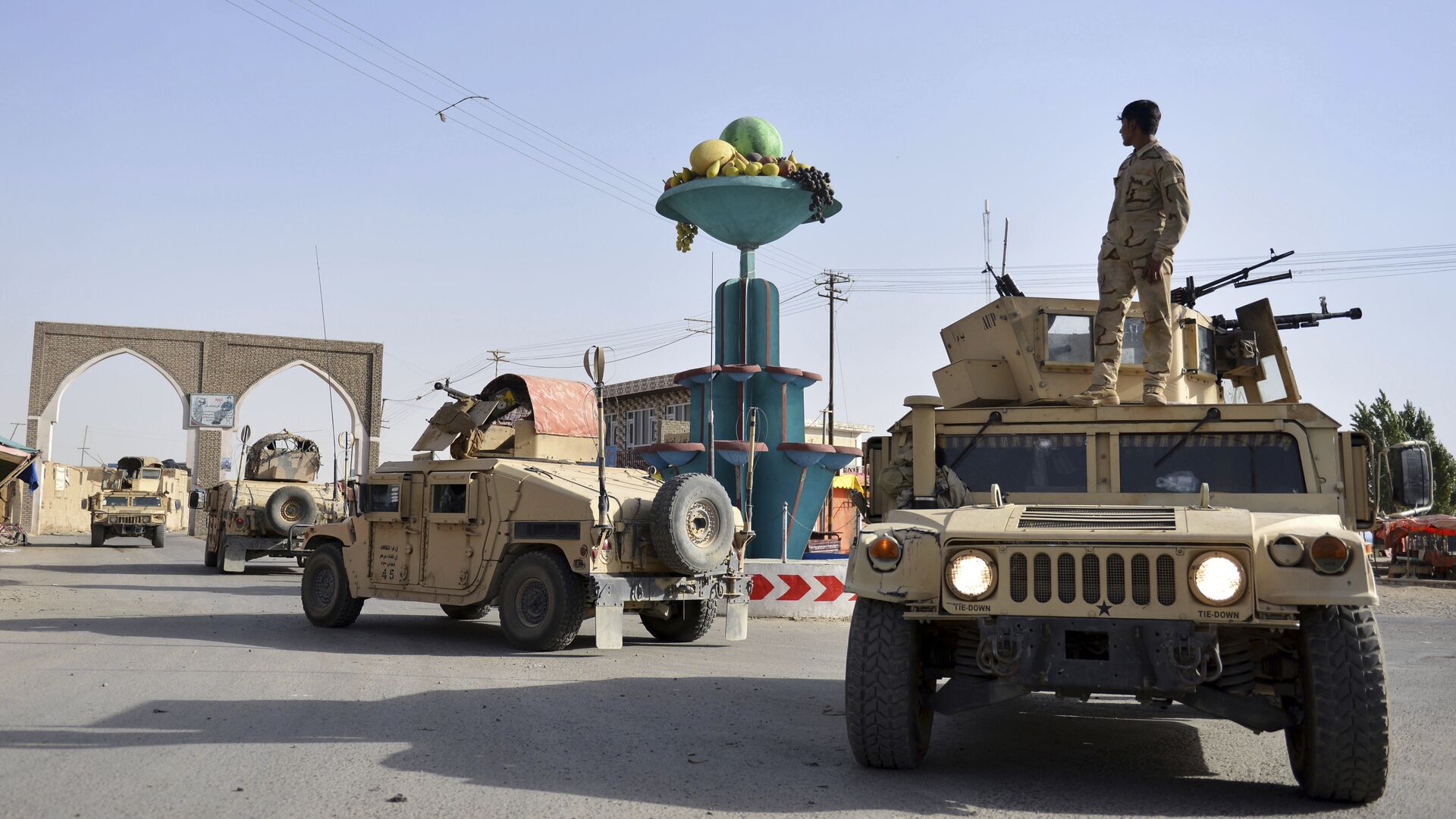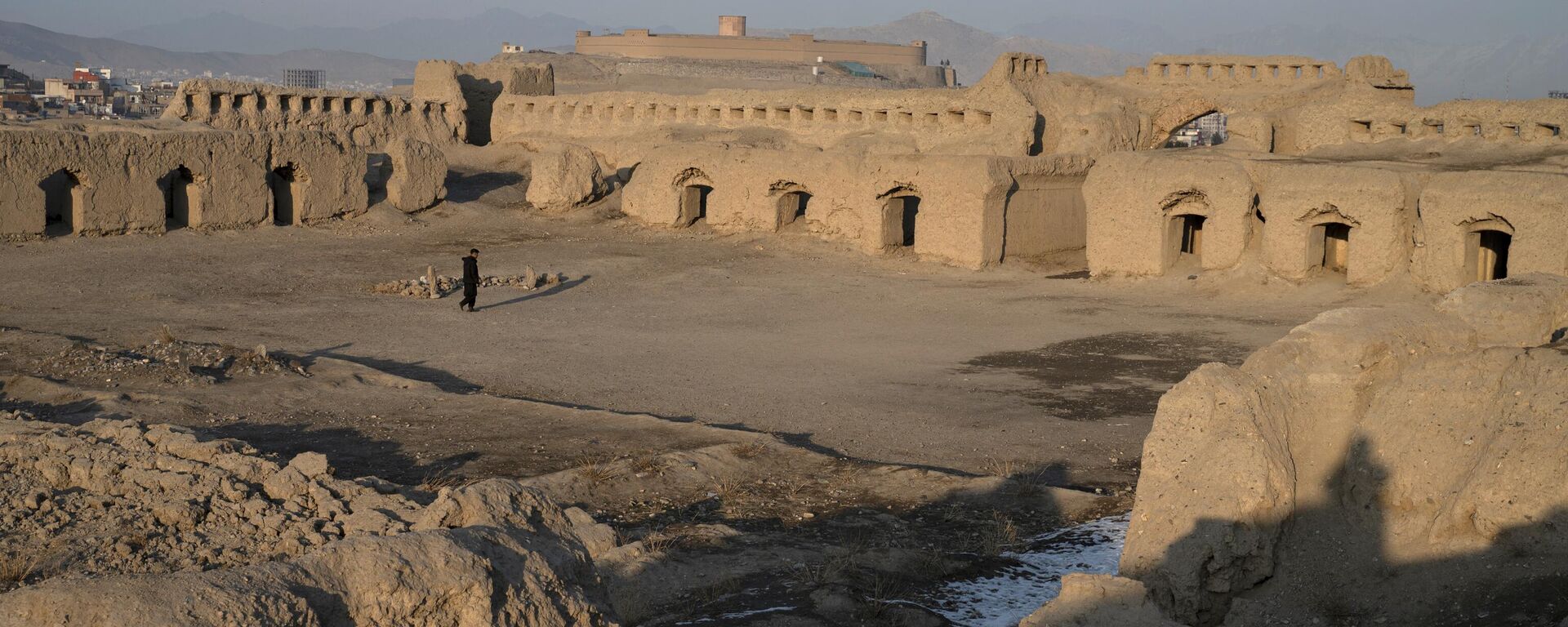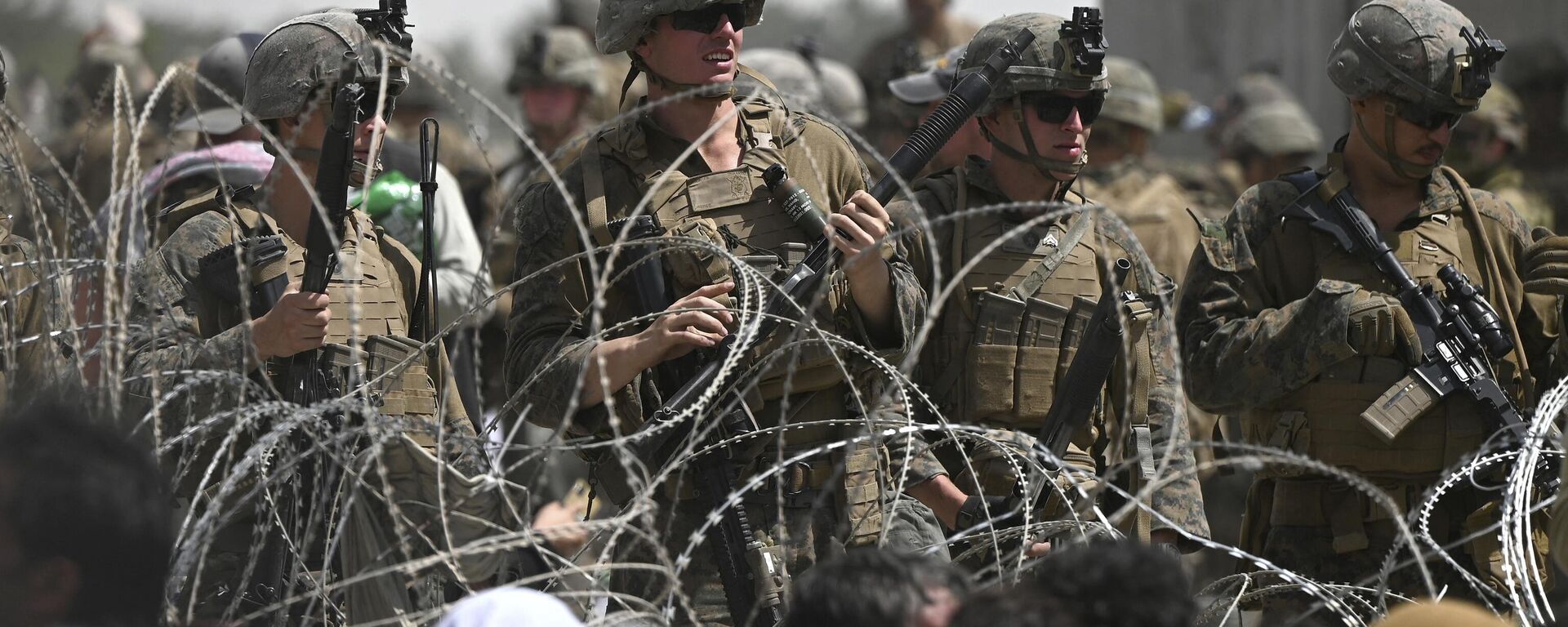https://sputnikglobe.com/20230606/secret-cable-debunks-biden-claim-of-being-caught-off-guard-by-kabuls-sudden-2021-collapse-1110964377.html
Secret Cable Debunks Biden Claim of Being Caught Off Guard by Kabul’s Sudden 2021 Collapse
Secret Cable Debunks Biden Claim of Being Caught Off Guard by Kabul’s Sudden 2021 Collapse
Sputnik International
The United States and its NATO allies were forced to accelerate their withdrawal from Afghanistan in the late summer of 2021 after the Taliban* launched a Blitzkrieg offensive and overran all of the country’s major cities in less than two weeks, prompting the NATO-backed puppet government and security forces to disintegrate.
2023-06-06T19:14+0000
2023-06-06T19:14+0000
2023-06-06T19:17+0000
world
joe biden
darrell issa
antony blinken
kabul
afghanistan
washington
taliban
state department
house foreign affairs committee
https://cdn1.img.sputnikglobe.com/img/106732/12/1067321204_0:428:5184:3344_1920x0_80_0_0_d5ff20372021cd3b2b95b663dda64e25.jpg
A classified State Department assessment written on the eve of Kabul’s fall to the Taliban in July 2021 challenges publicly-stated claims by Biden administration officials that the White House didn’t expect the Afghan government and security forces to crumble as quickly as they did.“What we saw was their prediction, with great accuracy, of exactly what was going to happen and what the outcome would be if they did not change their directions,” House Foreign Affairs Committee member Representative Darrell Issa told media of the document, which the Biden administration agreed to let committee lawmakers look at after a months-long struggle.According to Issa, the document also indicated that the State Department appeared to have pretty much resigned itself to the fact that billions of dollars in US military hardware would be seized by the Taliban.The battle over the so-called ‘dissent cable’ – an outlet for officials to express views which are contrary to official policy, was waged in Washington over the space of several months, with the House Foreign Affairs Committee threatening to hold Secretary of State Antony Blinken with contempt if he did not allow lawmakers investigating the Afghanistan withdrawal to view it. Blinken initially refused the request, but reneged last week, first agreeing to allow House Foreign Affairs Committee chairman Michael McCaul and Democratic ranking member Gregory Meeks see the document, and then agreeing to let it be seen by all members of the committee.The cable, signed by nearly two dozen State Department staffers and former Kabul Embassy diplomats, is said to provide crucial “first-hand information” regarding communications between the embassy and officials in Washington.US and allied forces were forced to speed up their evacuation from Afghanistan in August 2021 as the Taliban blitzed through the country’s provincial capitals and arrived in Kabul on August 15. The US-backed Afghan government and security forces quickly crumbled, and former president Ashraf Ghani fled the country, allegedly with bags of millions of dollars in cash.The chaotic exit left behind billions in US military hardware, and 183 people, including 13 US service members, were killed in an ISIS-K* suicide attack in Kabul during the evacuation, which also saw hundreds of US citizens left behind.US officials continued to assure Americans that the Kabul government would hold to the very last hours of its existence, with Pentagon spokesman John Kirby assuring reporters in Washington just two days before the capital was overrun that the city was “not right now in an imminent threat environment.”The US-led war in and occupation of Afghanistan cost hundreds of thousands of lives, including up to 100,000 Afghan civilians, 92,000 Afghan security forces personnel and over 3,500 US and coalition troops, and cost the US over $2 trillion over twenty years, according to Brown University’s Costs of War Project.* Under UN sanctions for terrorist activities.* Terrorists affiliated with Daesh (ISIS/ISIL), outlawed in Russia and many other countries.
https://sputnikglobe.com/20230416/taliban-territory-will-not-be-used-against-russia-central-asia-1109581468.html
https://sputnikglobe.com/20230428/thousands-of-afghans-entitled-to-uk-asylum-left-behind-after-pullout-1109913160.html
https://sputnikglobe.com/20230520/scott-ritter-how-americans-fell-for-washingtons-war-racket-1110476563.html
kabul
afghanistan
washington
Sputnik International
feedback@sputniknews.com
+74956456601
MIA „Rossiya Segodnya“
2023
News
en_EN
Sputnik International
feedback@sputniknews.com
+74956456601
MIA „Rossiya Segodnya“
Sputnik International
feedback@sputniknews.com
+74956456601
MIA „Rossiya Segodnya“
afghanistan, united states, biden administration, white house, kabul, afghan withdrawal, afghan collapse
afghanistan, united states, biden administration, white house, kabul, afghan withdrawal, afghan collapse
Secret Cable Debunks Biden Claim of Being Caught Off Guard by Kabul’s Sudden 2021 Collapse
19:14 GMT 06.06.2023 (Updated: 19:17 GMT 06.06.2023) The United States and its NATO allies were forced to accelerate their withdrawal from Afghanistan in the late summer of 2021 after the Taliban* launched a Blitzkrieg offensive and overran all of the country’s major cities in less than two weeks, prompting the NATO-backed puppet government and security forces to disintegrate.
A classified State Department assessment written on the eve of Kabul’s fall to the Taliban in July 2021 challenges publicly-stated claims by Biden administration officials that the White House didn’t expect the Afghan government and security forces to crumble as quickly as they did.
“What we saw was their prediction, with great accuracy, of exactly what was going to happen and what the outcome would be if they did not change their directions,” House Foreign Affairs Committee member Representative Darrell Issa
told media of the document, which the Biden administration agreed to let committee lawmakers look at after a
months-long struggle.
“They redacted the specific names, but we now know that many of them were senior executive surrogates, meaning people that are paid at the highest level in the State Department. They knew and understood that there was no way that the Afghan military was going to defend successfully. They did not disagree with that, and as a result, they knew that Kabul would fall within weeks, that the Taliban would do what they have done, which is to continue to kill and persecute individuals, and they allowed it to happen,” the congressman added.
According to Issa, the document also indicated that the State Department appeared to have pretty much resigned itself to the fact that billions of dollars in US military hardware would be seized by the Taliban.
The lawmaker said he considers it “inappropriate” for the document - which has not been released to the public, to remain classified. “This is classified because it’s embarrassing. There’s absolutely no reason that the American people shouldn’t see it, and I will not rest until they do,” he said.
The battle over the so-called ‘dissent cable’ – an outlet for officials to express views which are contrary to official policy, was waged in Washington over the space of several months, with the House Foreign Affairs Committee
threatening to hold Secretary of State Antony Blinken with contempt if he did not allow lawmakers investigating the Afghanistan withdrawal to view it. Blinken initially refused the request, but reneged last week, first agreeing to allow House Foreign Affairs Committee chairman Michael McCaul and Democratic ranking member Gregory Meeks see the document, and then agreeing to let it be seen by all members of the committee.
The cable, signed by nearly two dozen State Department staffers and former Kabul Embassy diplomats, is said to provide crucial “first-hand information” regarding communications between the embassy and officials in Washington.
US and allied forces were forced to speed up their evacuation from Afghanistan in August 2021 as the Taliban blitzed through the country’s provincial capitals and arrived in Kabul on August 15. The US-backed Afghan government and security forces quickly crumbled, and former president Ashraf Ghani fled the country,
allegedly with bags of millions of dollars in cash.
The chaotic exit left behind billions in US military hardware, and 183 people, including 13 US service members, were killed in an ISIS-K* suicide attack in Kabul during the evacuation, which also saw hundreds of US citizens left behind.
US officials continued to assure Americans that the Kabul government would hold to the very last hours of its existence, with Pentagon spokesman John Kirby
assuring reporters in Washington just two days before the capital was overrun that the city was “not right now in an imminent threat environment.”
The US-led war in and occupation of Afghanistan cost hundreds of thousands of lives, including up to 100,000 Afghan civilians, 92,000 Afghan security forces personnel and over 3,500 US and coalition troops, and cost the US
over $2 trillion over twenty years, according to Brown University’s Costs of War Project.
* Under UN sanctions for terrorist activities.
* Terrorists affiliated with Daesh (ISIS/ISIL), outlawed in Russia and many other countries.





